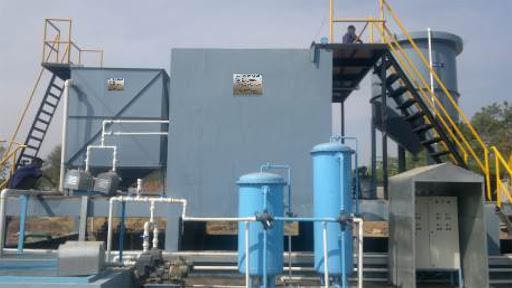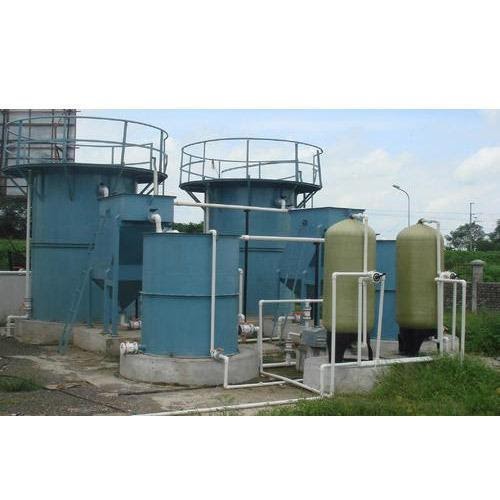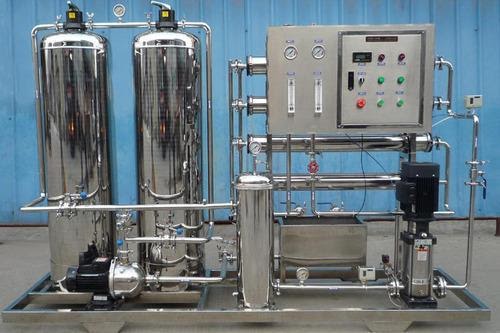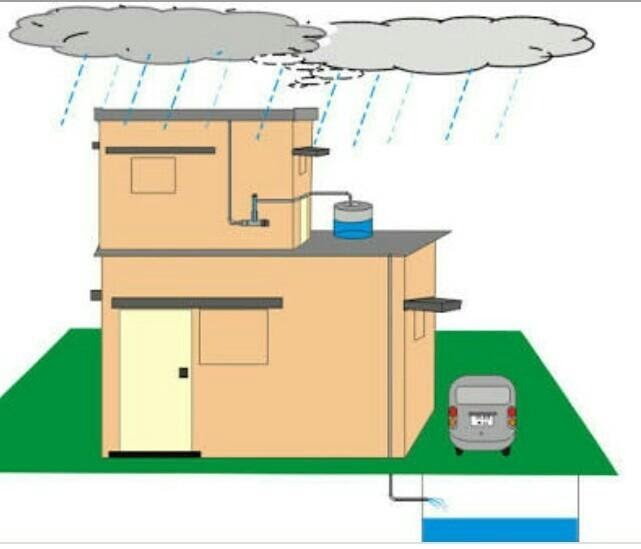Water Treatment Plants
1. Sewage Treatment Plant
Sewage treatment is the process of removing contaminants from municipal wastewater, containing mainly household sewage plus some industrial wastewater. Physical, chemical, and biological processes are used to remove contaminants and produce treated wastewater (or treated effluent) that is safe enough for release into the environment. A by-product of sewage treatment is a semi-solid waste or slurry, called sewage sludge. The sludge has to undergo further treatment before being suitable for disposal or application to land.

2. Effluent Treatment Plant

Effluent is an outflowing of water or gas to a natural body of water, from a structure such as a wastewater treatment plant, sewer pipe, or industrial outfall. Effluent, in engineering, is the stream exiting a chemical reactor. The treatment of effluents is essential to prevent pollution of the receiving water. The effluent water treatment
plants are installed to reduce the possibility of pollution; biodegradable organics if left unsolved, the levels of contamination in the process of purification could damage
bacterial treatment beds and lead to pollution of controlled waters.
3. RO Plant
Reverse osmosis (RO) is a water purification process that uses a partially permeable membrane to remove ions, unwanted molecules and larger particles from drinking water. In reverse osmosis, an applied pressure is used to overcome osmotic pressure, a colligative property that is driven by chemical potential differences of the solvent, a thermodynamic parameter. Reverse osmosis can remove many types of dissolved and suspended chemical species as well as biological ones (principally bacteria) from water, and is used in both industrial processes and the production of potable water. The result is that the solute is retained on the pressurized side of the membrane and the pure solvent is allowed to pass to the other side. To be "selective", this membrane should not allow large molecules or ions through the pores (holes), but should allow smaller components of the solution (such as solvent molecules, i.e., water, H2O) to pass freely.

4. Rain Water Harvesting

Rainwater harvesting (RWH) is the collection and storage of rain, rather than allowing it to run off. Rainwater is collected from a roof-like surface and redirected to a tank, cistern, deep pit (well, shaft, or borehole), aquifer or a reservoir with percolation. Dew and fog can also be collected with nets or other tools. Rainwater harvesting differs from storm water harvesting as the runoff is collected from roofs, rather than creeks, drains, roads or any other land surfaces. Its uses include watering gardens, livestock, irrigation, domestic use with proper treatment, and domestic heating. The harvested water can also be committed to longer-term storage or groundwater recharge. Rainwater harvesting is one of the simplest and oldest methods of self-supply of water for households, and residential and household scale projects usually financed by the user. However, larger systems for schools, hospitals and other facilities can run up costs only able to be financed by companies, organization and governmental units.
